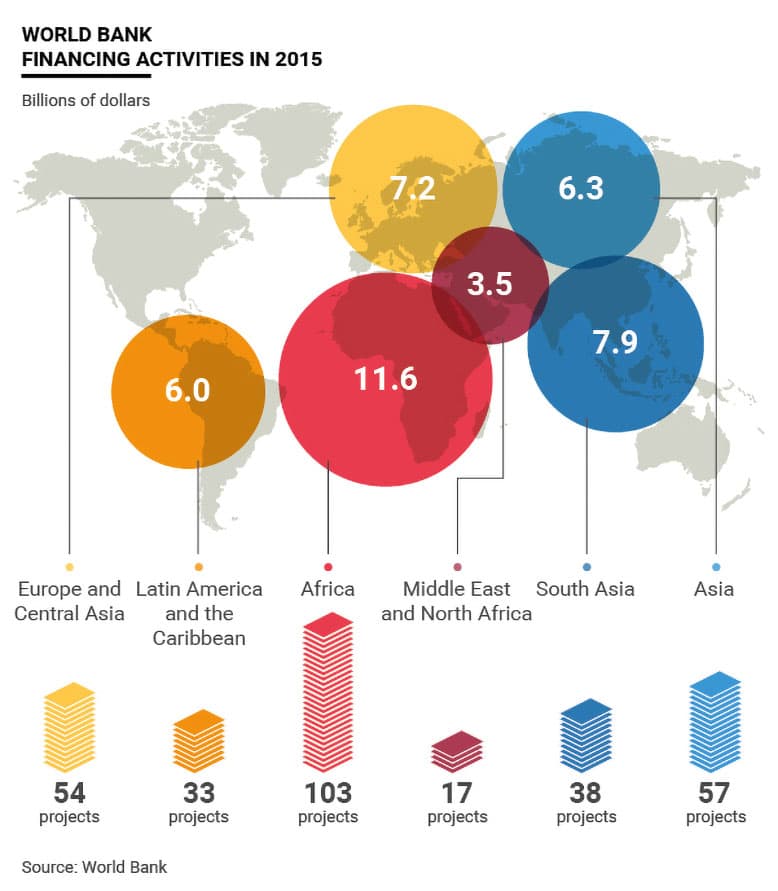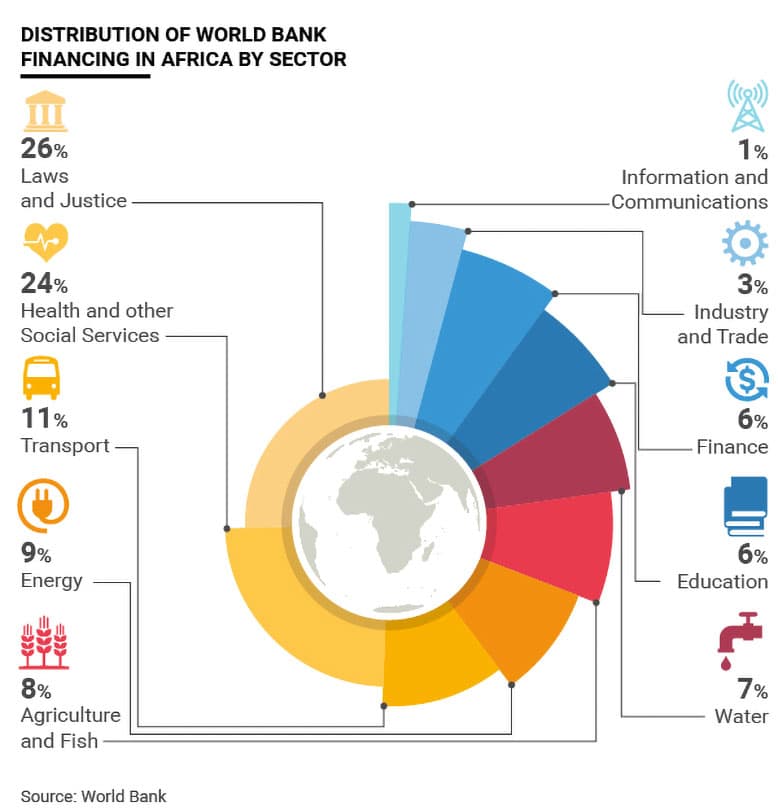
The Addis Ababa Action Agenda, which emerged from the summit held in the Ethiopian capital last July, opens a new chapter for institutions that are dedicated to supporting the development of countries – especially the World Bank.
More than 70 years since its foundation, the World Bank Group is being called upon to review the model that it has followed to support growth and eradicate poverty. It is expected to confront difficult challenges such as the reduction of internal expenditures and the competition posed by other institutions including the Asian Infrastructure Investment Bank and the New Development Bank – two very present institutions among the G7 countries. The World Bank is also being asked to adjust the way it helps countries so that it is more aligned with the agenda set by the United Nations under the Millennium Development Goals and the Sustainable Development Goals. These challenges are reviewed in “The Post-2015 Agenda and the Evolution of the World Bank Group”, a report by the Brookings Institute in Washington, D.C., described in a 2014 report by Pennsylvania University as the most influential think tank in the world.
Scenarios identified by Brookings Institute
The analysis done by the prestigious U.S. think tank points to the greater competition that the World Bank will have to face in the coming years in its role as a driving force for growth and development in the world.
In addition to notable protagonists such as the Asian Infrastructure Investment Bank, there are a number of regional development banks and investment funds as well as foundations with substantial financial resources. There are also academies and organizations from civil society (the Abdul Latif Jameel Poverty Action Lab at Boston’s MIT and the International Growth Centre of the London School of Economics and Political Science, for example) that are able to grab a piece of the action from the World Bank because they focus on specific projects that have an immediate impact on the local population.
These are some of the reasons why the report says the World Bank must adjust its goals after dedicating itself for decades to eradicating poverty. It identifies growth, sustainability and social stability as the objectives on which the World Bank should focus. If the World Bank wants to preserve its leadership, it must help countries develop by working on complex projects aimed at supporting the growth in a larger sense.
Investments and infrastructures
For the next three years, the World Bank has already set out the cost of support in various regions of the world to be provided by two of the five organizations that make it up: the International Development Association and the International Bank for Reconstruction and Development.
In 2015, the projects have focused on coordinated structured programs, with a total investment in more than 300 initiatives. In particular, the Bank is spending:
- $11.6 billion on 103 projects in Africa, while the portfolio of projects already underway totals $52 billion;
- $6.3 billion worth of 57 projects in Asia;
- $7.9 billion and 38 projects in South Asia;
- $7.2 billion and 54 projects in Europe and Central Asia;
- $6 billion and 33 projects in Latin America and the Caribbean;
- $3.5 billion and 17 projects in the Middle East and North Africa.

A good number of these investments and strategic projects are concentrated on infrastructure.
“Infrastructure development – in the energy, water, transport, and information and communication technology sectors – is critical to create growth opportunities and to reduce poverty.
Providing affordable, reliable, and sustainable energy, for example, to the 1.1 billion people who live without it – and modern cooking and heating solutions to the 2.9 billion people who use wood or other biomass as household fuel – is vital to ending poverty and boosting shared prosperity in a sustainable manner,” reads the World Bank Annual Report 2015. “The whole of Sub-Saharan Africa, with a population of around 1 billion, consumes only 145 terawatt/hour of electricity a year, which is equivalent to about one incandescent light bulb per person for three hours a day,” it adds.
In Africa, as it is elsewhere in the world, the way out of poverty is to be found in infrastructure: from the hydroelectric plants that generate clean energy to the transport networks that support big cities. Even in this sector the World Bank’s strategy is clear: providing an immediate response to the explosion in the world’s urban population, which is set to grow by 2 billion people in the next 15 years. This response consists in ensuring a more modern and efficient way of supplying energy as well as providing other types of infrastructure to help cities grow in an efficient and livable manner.

Internal reform
The World Bank’s new strategy also includes rationalizing costs and improving managerial processes. Its administrative budget for 2015, for example, totals $2.5 billion. Cuts are expected to total $400 million between 2015 and 2017.
So the World Bank, with its 12,300 employees, has been called upon to undertake profound changes both internally and externally, as seen in the goals set this year at recent international meetings.
These are the changes for which developing economies are waiting from an institution that helped many countries recover from the Second World War, generating wealth and prosperity.

